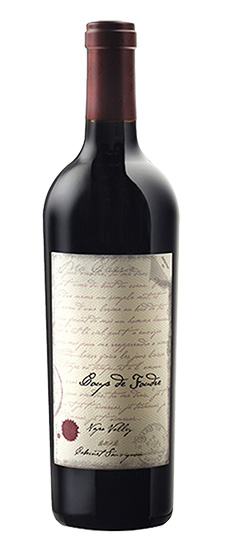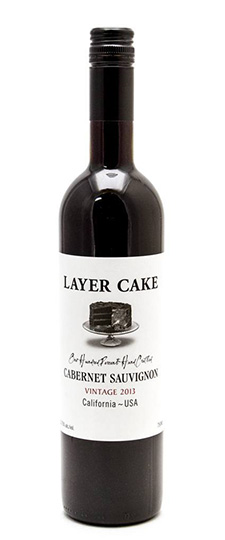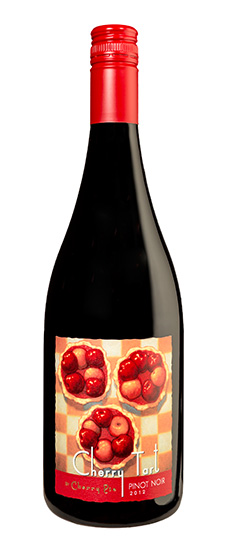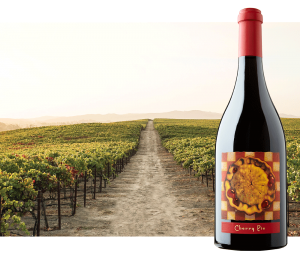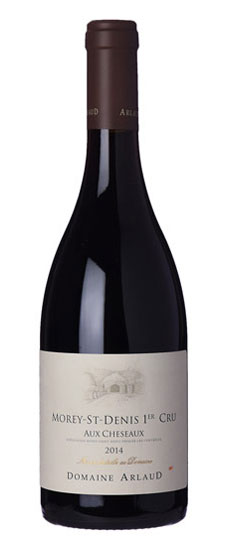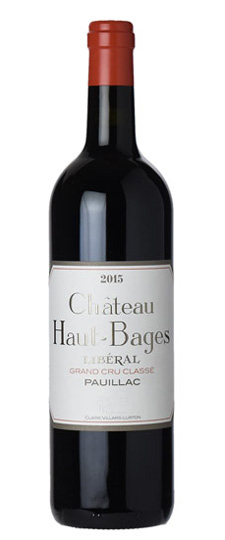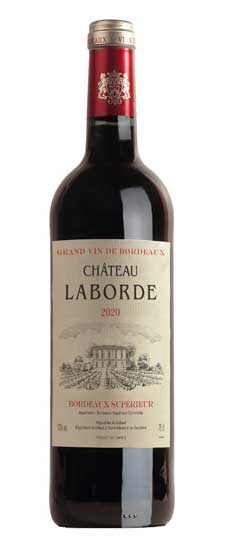Wine Score
Robert Parker’s Wine Advocate
The two vintages of Pinot Noir that I tasted started with his famous 2012 Cherry Pie Stanly Ranch. This is a completely destemmed, sexy, in-your-face style of Pinot Noir, much like Jayson Woodbridge himself. Terroiristes will probably get their panties in a twist arguing that it is too delicious, too yummy, but this is a beautiful wine with super black cherry/kirsch liqueur-like fruitiness, soft tannins, and a round, juicy, authentic Pinot Noir character.
Stephen Tanzer’s International Wine Cellar
Pale-medium bright red. Aromas of raspberry, brown spices and underbrush are lifted by a floral note. Silky and light on its feet, with ripe acidity framing the rich, sweet flavors of red berries, red cherry and earth. Offers good fat without excess weight, finishing with a fine dusting of tannins and very good length. Sweeter and more expansive than the 2011 bottling. Jayson Woodbridge’s Pinots have gotten much subtler and more perfumed in recent vintages.
Grape Variety
Pinot Noir Wine
Pinot Noir is the red wine grape of Burgundy, now adopted (and feverishly studied) in wine regions all over the world. The variety’s elusive charm has carried it to all manner of vineyards, from western Germany and northern Italy to Chile, South Africa, Australia and, perhaps most notably, California, Oregon and New Zealand. It is the patriarch of the Pinot family of grape varieties – so called because their bunches are similar in shape to a pine cone (pinot in French). Other members of this family include Pinot Gris, Pinot Blanc, Pinot Meunier, Aligote and Pinot Noir’s white-wine counterpart, Chardonnay.
Pinot Noir causes more discussion and dispute than any other grape, most of which centers around finding and describing the variety’s “true” expression. Examples from Santenay are undeniably different from those made on the other side of the world in Central Otago, and yet they are all unmistakably, unquestionably Pinot Noir. It takes a great deal of care and skill to make Pinot perform, and the results vary wildly from watery, acidic candy water to some of the richest, most intensely perfumed wines on Earth. This elusive perfection has earned the variety obsessive adoration from wine lovers all over the world.
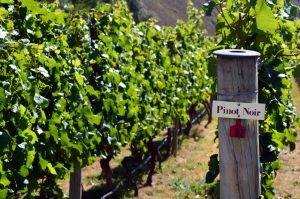 In Burgundy (Pinot’s homeland), the traditional vigneron focuses more on soil and climate than on the qualities of the grape variety itself (this is, after all, the home of terroir). Even very subtle differences in terroir are reflected in Pinot Noir wines made there. There are clear and consistent differences between the wines of Volnay and Pommard, for example, even though the villages are separated by just one mile.
In Burgundy (Pinot’s homeland), the traditional vigneron focuses more on soil and climate than on the qualities of the grape variety itself (this is, after all, the home of terroir). Even very subtle differences in terroir are reflected in Pinot Noir wines made there. There are clear and consistent differences between the wines of Volnay and Pommard, for example, even though the villages are separated by just one mile.
In Burgundy (Pinot’s homeland), the traditional vigneron focuses more on soil and climate than on the qualities of the grape variety itself (this is, after all, the home of terroir). Even very subtle differences in terroir are reflected in Pinot Noir wines made there. There are clear and consistent differences between the wines of Volnay and Pommard, for example, even though the villages are separated by just one mile.
The effects of terroir aren’t limited to Burgundy, of course – every region has its own particular terroir, and these are reflected in its wines, particularly when it comes to terroir-sensitive varieties such as Pinot Noir. Although many winemakers in the New World attempt to emulate the Burgundy style, the newer Pinot regions in Oregon, Washington, California and New Zealand have their own individual expressions and interpretations of the variety.
The essence of Pinot Noir wine is its aroma of strawberry and cherry (fresh red cherries in lighter wines and stewed black cherries in weightier examples), underpinned in the most complex examples by hints of undergrowth (sous-bois). Well-built Pinot Noirs, particularly from warmer harvests, also exhibit notes of leather and violets, sometimes approaching the flavor spectrum of Syrah.
The question of oak in Pinot Noir winemaking is frequently raised, as are the length of fermentation and the option of a pre-ferment maceration (cold soak). Cooler temperatures lead to fresher fruit flavors, while longer, warmer fermentations and pigeage result in more extracted wines with greater tannic structure. In order to retain as much Pinot character as possible, many producers have turned to biodynamic viticulture, avoiding the use of commercial fertilizers that may disrupt the variety’s sensitive chemical balance.
Although Pinot Noir earns most of its fame from its still, red, varietal wines, the variety is also a vital ingredient in the production of sparkling white wines. For these, it can be used alone (to produce blanc de noirs), but is most commonly blended with its cousin Chardonnay, and other members of the Pinot family – most obviously Pinot Meunier in Champagne and Pinot Blanc in Franciacorta. The highly successful Pinot – Chardonnay sparkling wine blend has been adopted by regions all around the world, in Europe, the Americas, South Africa, Australia and New Zealand.
Synonyms include: Pinot Nero, Pinot Negro, Spatburgunder, Blauburgunder.
Food matches for Pinot Noir include:
- Pappardelle pasta with a porcini ragu
- Roasted duck breast with plum sauce
- Seared chicken livers on toast
Region
Carneros Wine
(Los) Carneros is one of California’s oldest and most celebrated viticultural areas. It was first planted with grapes in the 1830s, and now ranks among the world’s top regions for Pinot Noir and Chardonnay, particularly when the two varieties are combined to make sparkling wines in the traditional method. (© Copyright material, Wine-Searcher.com)
The official Carneros AVA (created in 1983) covers an area of 90 square miles (230 square km) on the southernmost foothills of the Mayacamas and Sonoma mountain ranges. This location means the AVA is divided between America’s two most famous wine-producing regions – the eastern half in Napa, the western half in Sonoma. Many producers label their wines as “Carneros Napa Valley” or “Carneros Sonoma Valley”, depending on which side of the county line they are located.
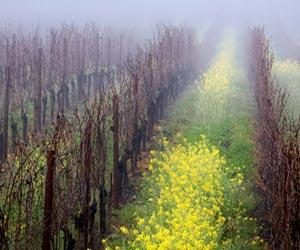 The topography here – and the cool, windy mesoclimate it creates – is intimately connected with the style of wine produced here. As the mountains disappear (they drop down into San Francisco Bay before rising again in Contra Costa County), so does the protection they provide from the cold, wet winds which blow in from the Pacific Ocean, 30 miles (50km) west of Carneros. This gives Carneros a much cooler, wetter climate than that found further north in the sheltered valleys. This gap in the mountains is known as the Petaluma Gap, and its influence extends beyond Carneros into other AVAs including Sonoma Coast, Russian River Valley and even the southern end of Napa Valley.
The topography here – and the cool, windy mesoclimate it creates – is intimately connected with the style of wine produced here. As the mountains disappear (they drop down into San Francisco Bay before rising again in Contra Costa County), so does the protection they provide from the cold, wet winds which blow in from the Pacific Ocean, 30 miles (50km) west of Carneros. This gives Carneros a much cooler, wetter climate than that found further north in the sheltered valleys. This gap in the mountains is known as the Petaluma Gap, and its influence extends beyond Carneros into other AVAs including Sonoma Coast, Russian River Valley and even the southern end of Napa Valley.
This cool, windy, foggy mesoclimate proved extremely challenging for the early vineyard, particularly when combined with the combined effects of phylloxera and Prohibition. It was not until the late 1970s that the area’s vineyards began to achieve any consistent quality and recognition, long after the central Napa Valley had established its post-Prohibition wine industry. By the late 1980s, many hundreds of acres of vineyard had been planted in the AVA, and the reputation of Carneros wines began rising to its current glory.
Carneros’ winemakers were quick to realize the potential of their terroir for cooler-climate wine styles. Besides varietal Pinot Noir and Chardonnay, they also make high-quality sparkling wines from the two varieties. In the 1980s, Champagne house Taittinger chose Carneros as the location for its Californian presence (Domaine Carneros), at around the same time as Cava magnates Jose and Gloria Ferrer started their sparkling wine production here.
Carneros Pinot Noir has traditionally been lighter and tighter than those from other Californian regions, with notes of berries and herbs, rather than anything deeper and more opulent. This makes it particularly obvious when a winemaker has been over-enthusiastic with the use of oak. Likewise, Carneros Chardonnay is typically more elegant than other Californian Chardonnays, with crisper acidity and fresh stone-fruit aromas. It is easy to see why a fair proportion of the district’s grapes are purchased by wineries from warmer regions, for use in sparkling wines. These Burgundian varieties dominate the vineyards here, jointly accounting for around 90 percent of the total vineyard area. In warmer, sheltered spots, mostly on the Napa side of the AVA, they are sometimes joined by small quantities of Syrah, Cabernet Sauvignon and Merlot.
The wines below are from the Napa Valley side of the Carneros AVA. To see those from Sonoma’s portion of Carneros, please see Carneros – Sonoma.
Producer Notes
Cherry Pie Stanly Ranch Pinot Noir
Vineyard
Pinot Noir was first planted at Stanly Ranch in the 1940s, when a clonal trial proved the ranch’s well-drained day-loam soils and rolling hills ideal for growing the finicky varietal. The vineyard has been significantly refined over the years, and Stanly Ranch is now one of the most sought-after vineyards for Pinot Noir in California.
Climate
The Los Carneros AVA straddles the southern parts of Napa and Sonoma Counties. It is the coolest wine region in Napa, with fog rolling in from San Pablo Bay at night, then peeling back later in the morning to expose the grapes to the sun. Stanly Ranch is on the Napa side of Los Carneros and has many microclimates throughout its rolling hills, resulting in substantial terroir differences in each block of the vineyard. The bay has a significant influence; the lower areas are the first to be covered with fog and the last to emerge, while the hills remain in the sun the longest.
Winemaking
We carefully chose the blocks for micro-lot fermentations to isolate the individual flavors and aromas. The majority of this wine was fermented in 500 liter French Oak Puncheons and punched down by hand. A portion was fermented in stainless steel tanks. The wine was aged in French Oak, a portion of which was the same puncheons the wine was fermented in that very year. The wine was never racked or filtered, and rested ‘sur lie’ for the entire aging period.

